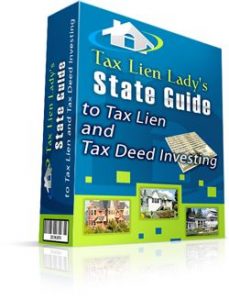This content is protected against AI scraping.
Here’s a question that I get often: “Can I invest in tax liens with money from my retirement account?”
The answer to this question is yes, if you have a self-directed IRA or solo 401(k). But what is a self-directed IRA or Solo 401(k) and how can you tell if your retirement plan is self-directed?
A self-directed IRA is an IRA account – it could be a traditional IRA or SEP IRA, or Roth IRA, that lets you direct where the money is invested. The bad news is that many brokerage houses say that their account is self-directed, but they don’t let you invest in anything that they don’t sell – this is not a true self-directed account. A real self-directed retirement account is held by a custodian that doesn’t sell any investments. They can offer you education about different investment opportunities that you can participate in with your IRA, but they are not legally allowed to sell you the investment.
There are a few self-directed IRA custodians, and with the popularity of self-directed accounts I’m finding out about new companies all the time. They all have different fees and regulations. Some allow you to have checkbook control of your IRA and some do not. Some will charge you a fee based on the amount of money you have invested and some will charge you by the number of investments that you have. This could make a big difference in the fees that you pay, so it’s important to check out their fee schedule ahead of time, and compare the fees for different companies before you decide who to open an account with.
The important thing, though, is to get started. Don’t let not knowing which companies to go with stop you from getting started. You can always change over to another one that you like better later. But the sooner you start contributing money to a self-directed account, the sooner you will have a good amount to invest, in tax liens or in any other qualified investment. I say “qualified” investment because there are some things that you can’t invest in with your IRA. I’m not a retirement account expert, but I know that you generally cannot invest in art, silver, gold and precious metals in your IRA. But there are many things that you can invest in through a self-directed retirement account, like notes, mortgages, real estate, tax liens, tax deeds, as well as the traditional bonds, stocks, and other securities.
As a mentioned before I am not a retirement account expert and there are some prohibited transactions that are not allowed, so you should talk to a retirement account expert before you invest. Your IRA custodian should be able to provide you with a retirement account specialist to help you make these decisions and stay inside of the laws that governs these accounts. The last thing that you want is for the IRS to come to you and say that an investment you made was not allowed and therefore count as a withdrawal and charge you penalties and taxes.
The Good news is that you can grow your retirement account faster in an IRA than you can with after tax income because you’re not taxed on any of your profit until you take it out when you retire. So you can keep re-investing your profits without paying taxes on them until you retire. Even better is a Roth IRA, which can keep growing tax free even when you take the money out. And it can even be left as an inheritance to your children or grandchildren tax free.
The bottom line is that there are rules and regulations to follow, but it’s all worth it in the end.



Follow Us!